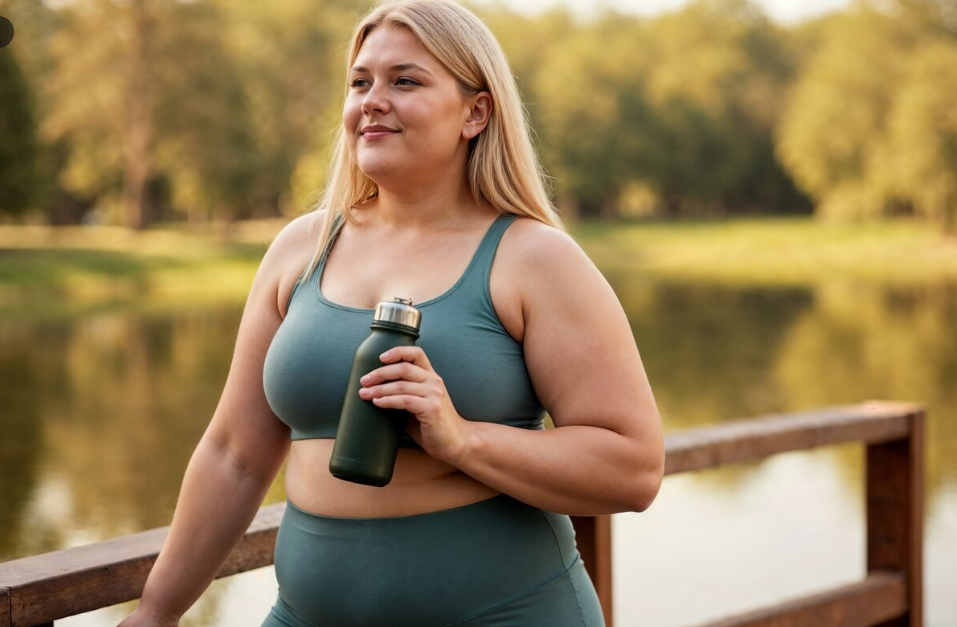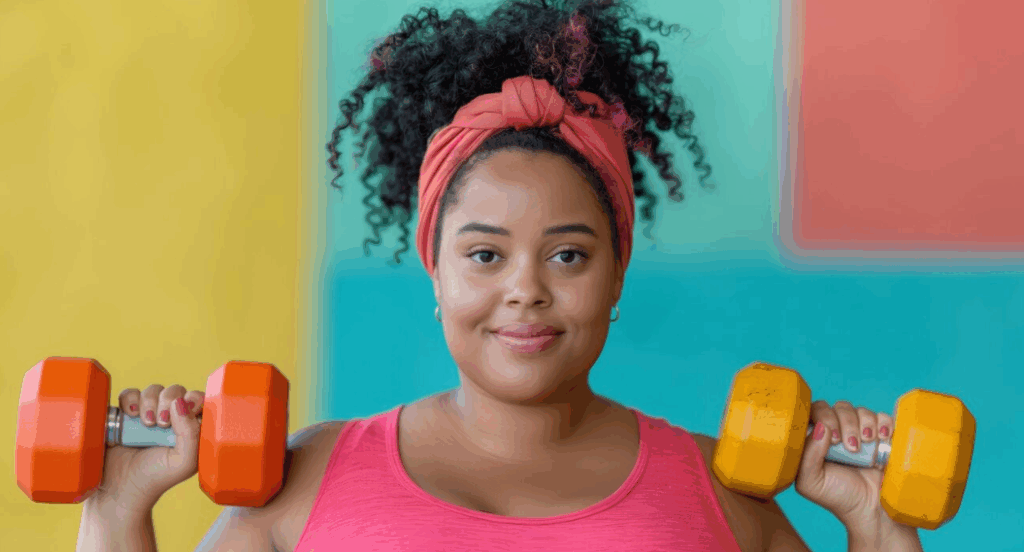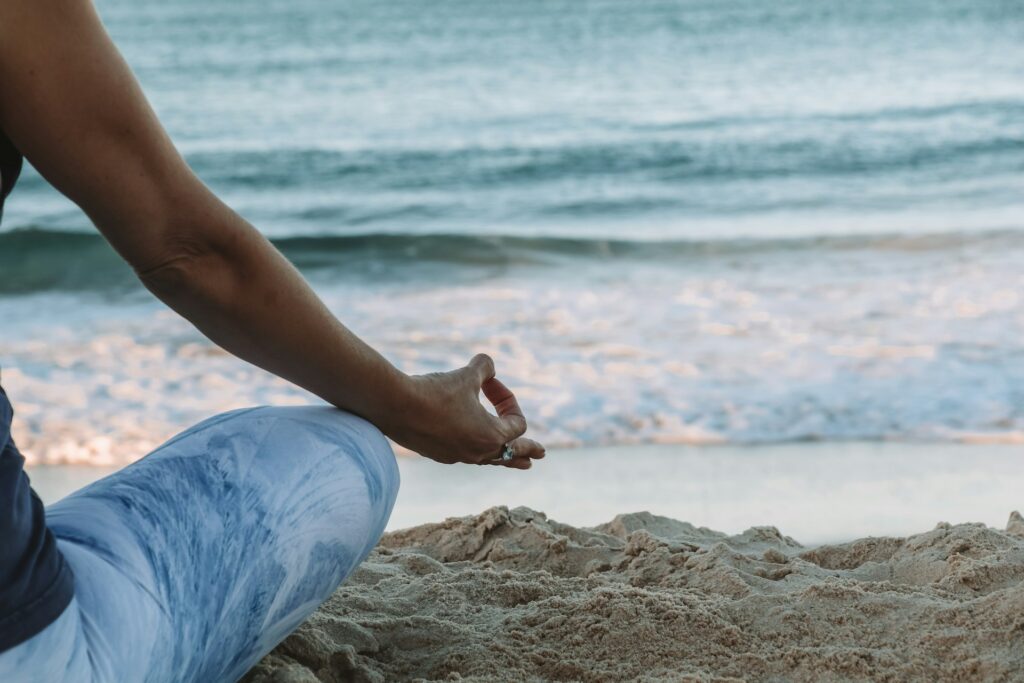Why gentle movement might be the missing piece in your wellness puzzle?
It’s 6 AM, and I’m standing outside my local gym, membership card in hand, trying to muster the courage to walk through those intimidating glass doors. The music is pumping, machines are clanking, and through the windows, I can see people who look like they were born in workout gear effortlessly gliding from one piece of equipment to another.
I turn around and walk back to my car.
Despite what Instagram might have us believe, not everyone thrives in the traditional gym environment. Some of us prefer movement that feels more like a conversation with our bodies rather than a demanding monologue.
The Gym Girl Myth That’s Keeping Us Stuck
Somewhere along the way, we’ve been sold the idea that “real” fitness happens in a gym. That unless you’re lifting heavy, sweating profusely, and pushing through pain, you’re not doing it right. 2025 is all about softer, mobility focused movement activities, and frankly, it’s about time.
The truth is, the fitness industry has created a narrow definition of what counts as “exercise.” But movement is so much more than that. It’s the way you stretch when you first wake up, the gentle flow of folding laundry, the rhythm of walking your dog around the block. It’s all movement, and it all counts.
For many of us, especially women juggling multiple responsibilities, the idea of adding another high-intensity, time-consuming activity to our already packed schedules feels overwhelming rather than appealing. We need something that fits into our lives, not something that requires us to completely restructure our days around it.
The Gentle Revolution: Why Softer Movement is Taking Over
Here’s what’s happening in the wellness world that nobody’s talking about: low-impact fitness trends like Pilates, barre and functional movement training are gaining momentum. These workouts are designed to build strength, improve core stability and enhance flexibility, all while being gentle on aging joints.
This isn’t about being “easy” on ourselves—it’s about being smart. Rather than waiting for injury or burnout to force a change, practitioners are proactively embracing modalities that enhance mobility, reduce stress, and support healthy aging.
Think about it: When did we decide that exercise had to be punishment? When did we start believing that if we’re not sore the next day, we didn’t work hard enough? This mentality has kept so many of us on the sidelines, believing we’re not “athletic enough” or “dedicated enough” for fitness.
What Gentle Movement Actually Looks Like
Let’s get practical. Gentle movement isn’t about perfection or performance—it’s about presence. It’s the difference between working out and moving with intention.
Morning Mobility Moments: Instead of jumping straight into your day, try five minutes of gentle stretching. Roll your shoulders, twist your spine, reach your arms overhead. It’s not about touching your toes; it’s about waking up your body with kindness.
Walking Meditation: Your daily walk doesn’t need to be a cardio session. Try walking at a pace that allows you to notice your breath, the ground beneath your feet, the way your arms naturally swing. Whatever the physical activity, instead of simply working out to master a skill or improve your condition, you can move and breathe in a way that shifts you from feeling busy and distracted.
Functional Movement: This is movement that serves your daily life. Squatting to pick up toys, reaching overhead to put dishes away, carrying groceries—when done mindfully, these activities become your strength training.
Creative Expression: Dance in your kitchen while cooking dinner. Stretch while watching TV. Garden with awareness of how your body bends and reaches. Movement doesn’t have to be formal to be beneficial.
The Mind-Body Connection We’ve Been Missing
What sets gentle movement apart isn’t just the physical approach—it’s the mental shift. Mindfulness now routinely combines with movement, creative expression, and daily activities. The boundaries between formal practice and daily life are blurring.
When we move with awareness, we’re not just exercising our muscles; we’re practicing being present. We’re learning to listen to our bodies instead of demanding they perform. This connection often leads to insights about stress, energy patterns, and what our bodies actually need.
I’ve noticed that when I approach movement this way, I naturally start making choices that support my wellbeing. I drink more water because I’m more aware of how hydration affects how I feel. I go to bed earlier because I can sense when my body needs rest. I choose foods that give me energy rather than drain it.
Building Your Personal Movement Practice
The beauty of gentle movement is that it’s entirely personal. Your practice might look completely different from mine, and that’s exactly how it should be.
Start where you are: If you’ve been sedentary, five minutes of gentle stretching is a perfect beginning. If you’re coming from high-intensity workouts, gentle movement might be the recovery your body has been craving.
Listen to your body: Some days you might feel energized and want to move more vigorously. Other days, gentle stretching might be exactly what you need. Both are valid.
Make it convenient: The best movement practice is one you’ll actually do. If going to a studio feels like a barrier, create space in your living room. If mornings are chaotic, find moments throughout your day.
Focus on how it feels: Instead of tracking calories burned or miles walked, pay attention to how movement affects your mood, energy, and overall sense of wellbeing.
The Ripple Effects of Gentle Movement
When we shift from viewing exercise as something we “have to do” to movement as something we “get to do,” everything changes. The stress hormones that spike when we dread our workouts start to settle. The guilt we feel about not being “good enough” at fitness begins to dissolve.
A 2016 research review found that tai chi may even ward off depression, dementia, and sleep troubles. This gentle, flowing movement offers benefits that go far beyond physical fitness.
But beyond the research, there’s something profound that happens when we treat our bodies with kindness. We start to trust ourselves more. We begin to see our bodies as allies rather than adversaries. We learn that strength comes in many forms, and sometimes the most powerful thing we can do is move gently.
Breaking Free from the All-or-Nothing Mentality
One of the biggest obstacles to consistent movement is the belief that it has to be perfect to count. We think we need to work out for an hour, or it’s not worth it. We believe we need to sweat buckets, or we’re not trying hard enough.
But what if movement was more like breathing? Something you do naturally, without forcing, without judgment? What if five minutes of gentle stretching was just as valuable as an hour-long workout class?
The goal isn’t to become a different person—it’s to become more yourself. To find the kind of movement that makes you feel alive, not exhausted. To discover what it means to inhabit your body with joy rather than struggle against it.
Your Movement, Your Rules
Here’s the truth that the fitness industry doesn’t want you to know: you don’t need anyone’s permission to move in the way that feels good to you. You don’t need to justify why you prefer walking to running, or why you choose yoga over weightlifting.
Your body is not a problem to be solved or a project to be completed. It’s your home, your vessel, your companion on this journey. And like any good relationship, it thrives on communication, respect, and gentle care.
The gentle movement revolution isn’t about doing less—it’s about doing what works for you. It’s about finding the sweet spot where movement becomes a form of self-care rather than self-punishment.
The Path Forward
If you’ve been waiting for permission to try a gentler approach to fitness, consider this your invitation. Start small. Be curious. Notice what feels good in your body. Trust that your instincts about what you need are valid.
Remember, the best exercise is the one you’ll actually do consistently. And consistency doesn’t mean perfect—it means showing up for yourself in whatever way you can, whenever you can.
Movement is a practice, not a performance. It’s a conversation with your body, not a competition with anyone else. And the most important part? You get to define what success looks like for you.
So whether you’re stretching in your pajamas, dancing in your kitchen, or taking a mindful walk around your neighborhood, you’re doing it right. You’re honoring your body’s need for movement in a way that feels authentic to you.
And that, my friend, is exactly the kind of movement that lasts.

Remember, individual responses to movement and exercise vary greatly. The information in this article is for educational purposes only and should not be considered medical advice. Always consult with healthcare professionals before beginning any new movement routine, especially if you have pre-existing health conditions or concerns. The author and publisher disclaim any liability for adverse effects arising from the use or application of the information contained in this article.
Sources:
- The Flow Space. “Top 2025 Fitness Trends for Women in Midlife.” February 2025.
- Wellness Wire. “The Rise of Gentle Movement: Why Mindful Mobility is Reshaping Fitness.”
- Mindful.org. “Getting Started with Mindful Movement.” February 2025.
- Emma Mills London. “6 Key Wellness Trends for 2025.” February 2025.
- Greatist. “21 Low Impact Cardio Exercises to Protect Your Joints.” August 2024.
- Mindful Leader. “7 Trends Shaping Mindfulness in 2025.”



